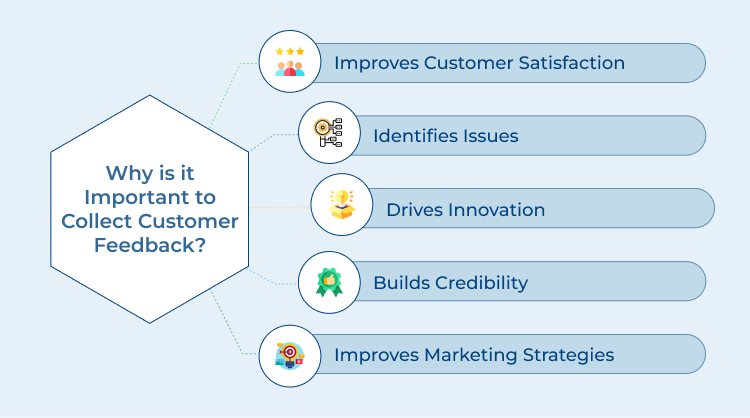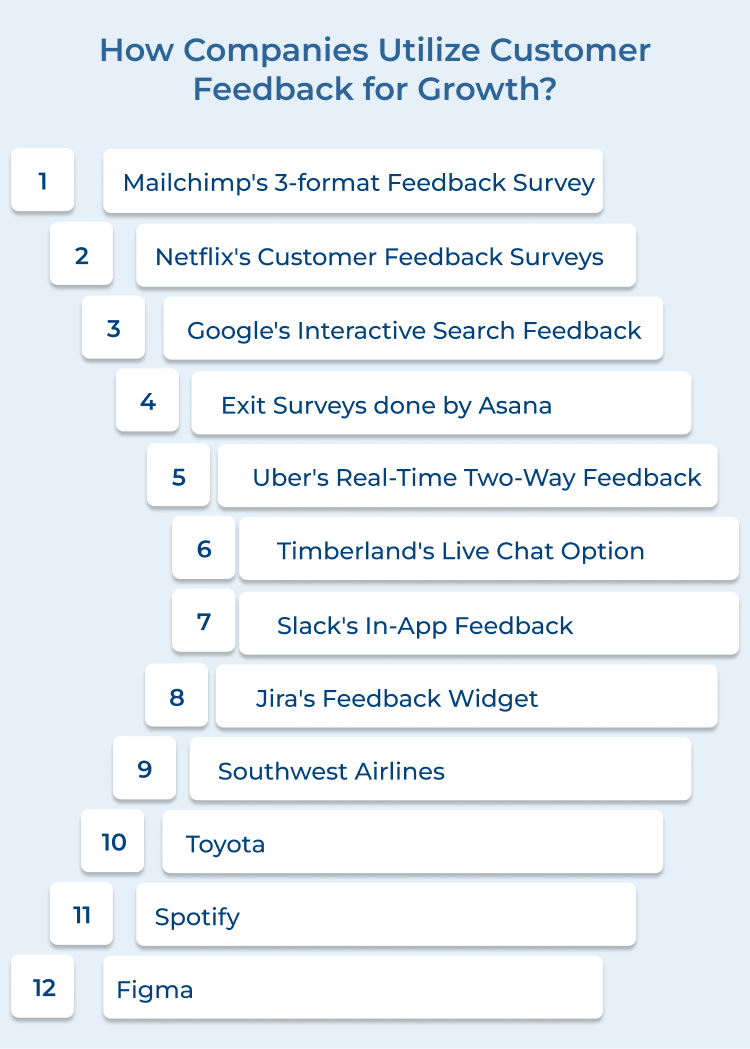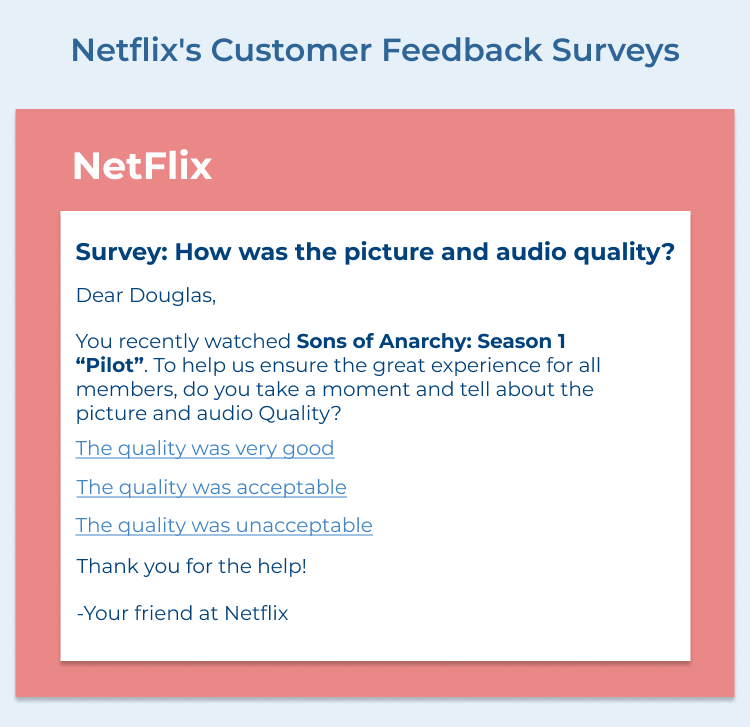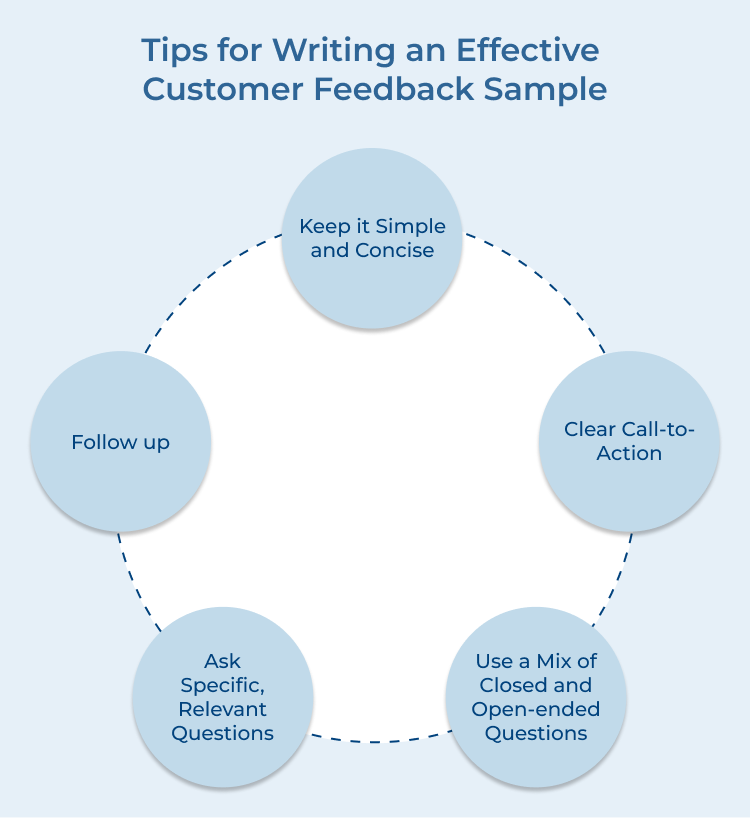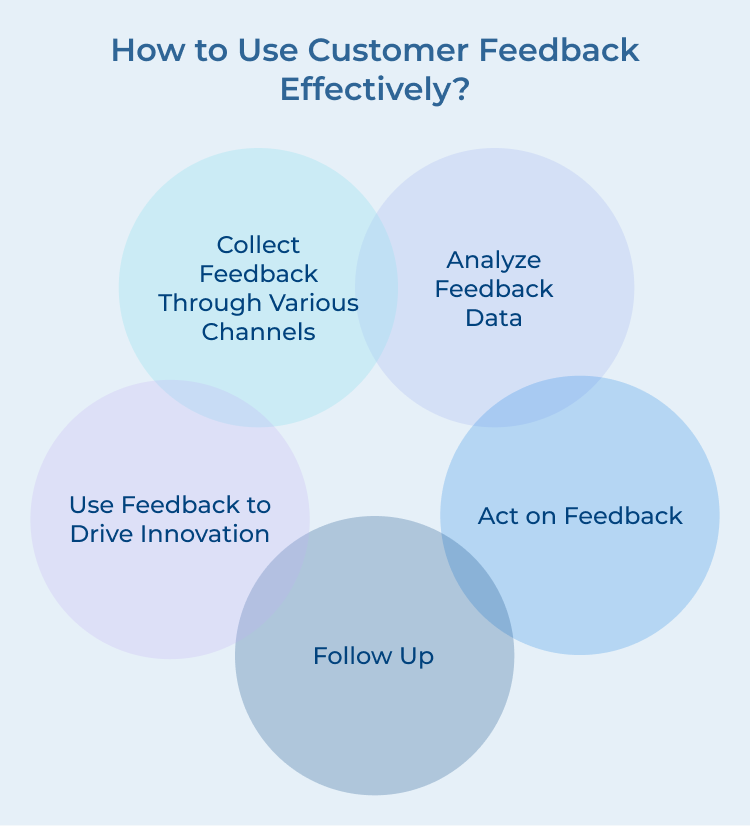1. Collect Feedback Through Various Channels
Make it easy for your customers to provide feedback by utilizing multiple channels such as surveys, email, social media and website feedback forms. By gathering feedback from various sources, you get a well-rounded view of what your customers are thinking and feeling.
2. Analyze Feedback Data
Once you have collected feedback, take the time to analyze the data. Look for common themes or patterns in the feedback that can help you identify areas for improvement. Pay attention to both positive and negative feedback, as both provide valuable insights into what your customers value most.
3. Act on Feedback
It’s not enough to simply collect and analyze feedback – you must also take action based on what you have learned. Implement changes to address any issues or concerns raised by customers and communicate these changes to show that you are listening while also responding to feedback.
4. Follow Up
After making changes based on customer feedback, follow up with customers to ensure that the changes have had the desired effect. It builds trust with your customers, as they will see that their opinions are valued and taken seriously.
5. Use Feedback to Drive Innovation
Customer feedback can also be a valuable source of inspiration for new product or service ideas. Pay attention to feedback that suggests unmet needs or desires among your customers and use this information to innovate as well as stay ahead of the competition.
Tools for Collecting Customer Feedback
Customer feedback provides valuable insights that improve overall customer satisfaction. There are many tools available that help businesses collect customer feedback effectively.
Omni24
Omni24 is a customer service platform that offers a feedback tool called Omni24 Feedback. The tool allows businesses to collect feedback from customers through various channels, such as email, chat and social media. It also offers customizable surveys and reports to help businesses track as well as analyze customer feedback effectively. Software integrates with other customer service tools, making it a comprehensive solution for businesses looking to improve customer satisfaction through feedback collection.
Key features:
- Omnichannel feedback collection: Platform allows businesses to collect feedback from multiple channels, including email, SMS, social media and in-person interactions.
- Real-time feedback monitoring: Omni24 offers real-time feedback monitoring capabilities, enabling businesses to quickly respond to customer feedback and address any issues.
- Advanced analytics: Software provides advanced analytics tools, such as sentiment analysis and text analytics, to help businesses gain deeper insights from customer feedback.
Veemo
Veemo Service is a customer engagement platform that allows businesses to communicate with customers through various channels such as email, SMS, chat and social media. It provides a centralized platform for managing all customer interactions and feedback, making it easier for businesses to track as well as respond to customer feedback in real-time.
Key features:
- User-friendly interface: Platform offers a sleek and intuitive interface that makes it easy for customers to provide feedback through interactive surveys.
- CRM integration: Software can be integrated with CRM systems to ensure customer feedback is directly linked to customer profiles, providing a more comprehensive view of customer satisfaction.
- Customizable surveys: Veemo allows you to create surveys tailored to your specific needs with various question types and themes to choose from.
Qualtrics
Qualtrics is a comprehensive customer feedback tool that offers a range of advanced features, such as customer satisfaction surveys, Net Promoter Score (NPS) assessments and customer journey mapping. Qualtrics allows businesses to collect feedback through multiple channels, including email, mobile and social media. The platform also provides powerful analytics tools to help businesses analyze customer feedback as well as identify trends.
Google Forms
Google Forms is another free tool that businesses use to collect customer feedback. With Google Forms, businesses can create as well as customize surveys using various question types, themes and designs. The platform also allows businesses to track responses in real-time and access detailed analytics on survey results. Google Forms is user-friendly and easy to use, making it a great option for businesses of all sizes.
Create Roadmap to Success with Customer Feedbacks
Gathering customer feedback is essential for creating a roadmap to success in any business. By listening to your customers, you identify areas for improvement, understand their needs & preferences and ultimately, tailor your products or services to better meet their expectations.
Utilizing customer feedback can help you build stronger relationships with your customers, improve customer satisfaction and ultimately drive growth for your business. Remember, the key to success lies in actively seeking feedback, analyzing it and taking action based on the insights gained. With a customer-centric approach, you pave the way for long-term success and sustainable growth.

